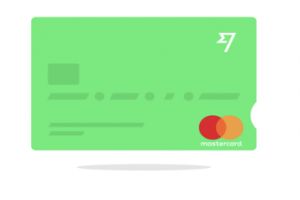4 Best Ways to Take Travel Money Overseas in 2025
Travelling can be exciting. From trips to see family and friends overseas, to exploring new cities or taking a beach break, or even travel for business. But whether you’re off on a well earned break to Bali, or headed to the US for work, you’re going to need to figure out the best way to spend money overseas.
Deciding the best way to travel with money overseas without getting hit by high fees and bad exchange rates can be a headache. But it doesn’t have to be. There are plenty of different ways of taking money overseas, each of which has its own pros and cons. This guide walks through 4 of the best ways to pay overseas so you can decide on the option that suits you best.
What are the best ways for Australians to spend money abroad?
As Australians, we love travelling. And while we travel, we need access to money. It's not the most glorious part of our travel plans, but it's equally important to decide on the best travel money option for us so we're not left feeling negative at any stage of our trip.
The problem is, it can be tricky working out the best travel money option to use. The fact is, the best one for you will really depend on what you need from the travel money type you're using.
Wise card - our pick for travel debit card
Open a Wise account online or with your card, and order a Wise travel debit card to make it easier and cheaper to spend while you’re away. Plus if you need cash for travel you can get some fee free ATM withdrawals overseas every month, too.
Once you have a Wise account and card you’ll be able to top up your account in AUD and either switch to the currency you need in your destination, or just let the card do the conversion for you at the point of payment. In either case you’ll get the mid-market exchange rate and low fees from 0.43%, with no foreign transaction charge to worry about.
Find out more about the Wise card.
| Pros | Cons |
|---|---|
| ✅ Hold, spend and exchange 40+ popular global currencies
✅ Free to spend any currency you hold in your account, conversion fees from 0.43% if you need to exchange from one currency to another ✅ You’ll always get the mid-market exchange rate ✅ Some fee free ATM withdrawals every month - once your account limit is exhausted you’ll pay a low fee to withdraw ✅ Accounts and cards have no ongoing fees and no minimum balance requirement ✅ Available as a virtual card
|
❌ Transaction fees apply to some services
❌ You’ll need to add funds to your account before you spend (unlike with a credit card) |
Debit Cards offer the convenience of a credit card, but work differently. They draw money directly from your bank account when you make a purchase. It's designed for everyday money transactions and means that you're not accumulating debt.
A debit card could make you stick to your travel budget, because you can't overdraw money from your account.
Benefits include:
- Direct access to your savings
- ATM withdrawals worldwide
- Security features like disposable virtual cards and zero-liability if lost or stolen
What are the fees?
- Currency conversion fees for all debit card payments in foreign currency
- Dynamic currency conversion fees if you don't choose the local currency to pay
- Flat fee or percentage-based ATM withdrawal fees
- Foreign ATM fees
- Flat fee or percentage fee for debit card purchases via EFTPOS
How do you get a travel debit card?
- Apply: Compare everyday transaction options and open account
- Give details: Bring personal I.D. You need be over 16 years old and have an Australian address
- Activate your account: get your debit card through mail
- If you haven't received your card, visit your branch or call your chosen provider to check
Tips when travelling with a travel debit card
If you get a travel debit card from a specialist like Wise you won’t usually need to tell the provider you’re headed on holiday. However, there are a few smart things you can do to make using your debit card easier and more convenient when you’re away:
- Make sure you know how to top up your account so you can add more money easily if you need to
- Check you know how to freeze and unfreeze your card (this can usually be done in the app)
- Keep a note of how to contact the provider, just in case your card is lost or stolen while you’re away
- Use a currency conversion tool to keep an eye on exchange rates - if rates change in your favour you might want to lock them in by converting some AUD to your destination currency in advance
- Always pay with the local currency wherever you are to avoid dynamic currency conversion (DCC)
Revolut - out top pick for prepaid travel cards
Revolut offers digital accounts you can manage through their app, and prepaid travel debit cards that can be used to spend in 25+ different currencies. You’ll need to open an account online or in the Revolut app and have your card sent to your home address, but you can then add funds in dollars and spend easily at home and abroad.
There’s no fee to spend a currency you hold in your account, and all accounts get some fee free ATM withdrawals and some currency conversion which uses the mid-market exchange rate. However, there are limits to the free transactions you can get, which are set according to the account type you choose, with fair usage fees after that.
| Pros | Cons |
|---|---|
|
✅ Choose from 3 different account tiers - there are no monthly fees for the Standard plan, or you can upgrade to an account with monthly charges and more features ✅ All accounts get some free ATM withdrawals and currency conversion ✅ Hold and exchange 25+ currencies in the account - it’s free to spend a currency you hold ✅ Top up and manage your account from your phone ✅ Higher tier accounts have extra features including cashback on spending and discounts on international transfers |
❌ You’ll need to pay a monthly fee to get all the features available ❌ Fair usage and out of hours fees can mean you pay extra when you convert or spend in foreign currencies |
Prepaid travel cards are a good alternative to carrying cash. With prepaid travel cards, you load the card with a set amount of money in the currency you need. You can then use it to make purchases online, in stores and to withdraw money at ATMs.
Most travel cards allow for different currencies to be loaded onto the card. So it's important to know what currency you'll be using on your travels. Airlines also offer prepaid cards so the money you spend can earn you reward points.
Benefits include:
- Load money upfront so you can budget
- Access multiple currencies
- Lock-in your foreign exchange rates
- Replaceable if lost or stolen
- Frequent flyer points
- Back-up card sometimes on offer
What are the fees?
- Exchange rate margins for your initial load
- Exchange rate margins when you close the card
- Flat or percentage-based fees to load the card
- Overseas ATM withdrawal fees
- Exchange rate conversion fee when you use the card
- Reload fees
- Closing fees
How do you get a prepaid travel card?
- Get a card: Compare prepaid card options and purchase your card online, at a bank or through your airline loyalty program
- Activate and register: call the phone number or go online to activate and register
- Load: add funds to your card in-store at time of purchase or online
- Use: Make purchases or withdraw money from ATM
- Reload: Add more funds to your cards via bank transfer/Bpay online
Tips when getting with a prepaid debit card
Prepaid debit cards can be convenient and safe ways to spend when you’re overseas. Generally using a prepaid card is as easy as using your bank card - but you might find your foreign currency spending costs you less in the end. Here are a few extra tips:
- Check that the prepaid travel card you’ve selected supports the currency you need in your destination
- Look out for foreign transaction fees or conversion fees, which may apply if you don’t switch your funds over to the destination currency in advance
- Make sure you know how to add more funds and manage your account and card once you’re away
- Keep a record of who to call if your card is lost or stolen
- If you intend to use your card again for next year’s holiday make sure there are no inactivity fees - these often apply if you don’t use your card for 6 or 12 months
- Choose a card on a major network like Visa or Mastercard for the best global acceptance
Westpac - travel credit card
If you’re considering a travel credit card, the Westpac Reward Altitude Black might be a good bet. You can earn rewards every time you use your card, but the rate at which you earn is far higher at 6 points per dollar, when you spend with partner airlines including Qantas, Jetstar and Emirates. There are also some other retailers which offer higher points earning opportunities, such as Airbnb and Uber, with all other spending accruing rewards at 1.25 per dollar.
Once you have reward points banked you can use them to pay for purchases, as cash back, to get gift cards, or when buying flights. Bear in mind that this card has a minimum income requirement of 75,000 AUD/year, plus annual fees, foreign transaction fees and cash advance costs.
| Pros | Cons |
|---|---|
|
✅ Earn points on all spending with higher reward rates for travel purchases ✅ Pay with points in a range of ways including with partner airlines ✅ Some complimentary insurance and airport lounge passes ✅ Get bonus points when you sign up, plus a reduced annual fee for the first year ✅ Spread the cost of your travel spending over several months if you choose to |
❌ 75,000 AUD minimum income requirement ❌ 3% foreign transaction fee, plus cash advance when you use an ATM ❌ Annual fee, interest and penalty fees may apply depending on how you use your card |
Credit cards have been around for a long time. But now there are specialised travel credit cards. These cards give you longer to pay back what you've spent, but the interest rates can be quite high.
The main advantage with travel credit cards are the reward points you get in return when you spend. But it only works if you pay off the balance in full each month.
Credit cards are great to use for car hire, restaurants and accommodation - larger expenses that are easier for you to pay back over time. Some services only take credit cards to hold purchases so it's handy to have while you travel.
Benefits include:
- Access to credit - often greater than your savings
- Security features like card fraud protection and zero-liability
- Low or no transaction fees
- Frequent flyer points or rewards
- Extra perks - travel insurance, purchase protection, airport lounge access, wifi, or concierge services
- Widely accepted - visa and mastercard is accepted almost everywhere
What are the fees?
- Annual fees
- Reward scheme fees
- Cash advance fees
- Interest charges
How do you get a travel credit card?
- Build credit history - pay your bills on time
- Choose your type of credit card: low rate, low fee or rewards points
- Apply for a credit card: Bring personal details, photo ID and proof of income
- Register for a new account if you don't have one
- Receive credit card in the mail if approved
Tips when getting a travel credit card
If you’re interested in using a credit card to spread the cost of your travel, and don’t mind paying a few fees to do so, a travel optimised credit card can be a great option. You’ll usually find you earn extra points, miles or rewards when you spend on travel - and you can then normally switch points for discounts on your next travel booking, too. Here are a few tips to bear in mind when you get a travel credit card:
- Make sure you’ve checked eligibility requirements as there may be a minimum income to apply
- Look for a card which offers extra rewards for spending with merchants you use anyway
- Check out how you can redeem points, and whether there are expiry dates or black out dates for travel booking, which can limit your options
- Weigh up the costs of the annual fee and any interest charges against the points or rewards you’ll earn
- Bear in mind you might have to pay a foreign transaction fee when you’re abroad, which may mean this is a better option for spending at home and accumulating points to get a cheap flight, rather than to take along with you
Foreign Currency Cash
It may sound obvious, but the most convenient way to carry money overseas remains cash. Virtually everywhere accepts it. Some places only accept cash, particularly in Asian and African countries.
It's always a good idea to have a little cash handy, even if only for emergencies and tipping. But keep it secured in a safe place.
Getting cash is best when you:
- Want to lock in a rate
- Want to stick to a budget
- Have a secure place to keep it
- Like to bargain for a better price for a product
- Don’t have precious time to waste hunting down the nearest ATM
- Want to avoid card fees every time you need to pay for something
Getting cash is not great if you:
- Want the absolute best rates
- Need to pay by credit card
- It can easily be stolen
- Need to make a claim for stolen cash on your travel insurance
- Are visiting multiple countries and plan to exchange money at each local currency provider
- Can only exchange money at the airport
What are the fees?
- Flat fee or percentage-based currency conversion costs
- Delivery charges
While not a fee, you also should consider the exchange rate you're getting when you convert your Australian dollars
How to organise foreign cash online?
- Compare: foreign exchange rates for cash
- Select your currency and amount: then choose delivery or pick-up
- Pay: Online pay by card, Bpay or bank transfer
- Get your cash: In 2-5 business days
Buying money at the bank before you go
Banks usually give competitive exchange rates and fees, but shop around various banks and other providers as you might save a few dollars. At a bank, if you buy $1,000 worth you can pay more than $25 in fees and commissions.
Order your currency about a week before your trip (allow longer for uncommon currencies), because some money changers won't have the currency you want in stock.
Best way to withdraw money overseas?
Withdrawing money from a local ATM once you arrive in your destination is convenient, and can be safer than carrying a lot of cash all at once - but it can also be expensive.
The exact costs you incur will depend on the specific card you use, including whether it’s a credit or debit card. With either card type you’ll need to check what foreign transaction fee is levied - this is often about 3% every time you withdraw. If you’re using a credit card you’ll usually also pay a cash advance fee which is a further percentage charge, and you may start to accrue interest instantly, too.
Getting a travel debit card, like the Wise card, can be a good option for taking money out from ATMs in the local currency. With Wise you get some fee free withdrawals every month, with low costs after that - plus there’s no foreign transaction fee, and you’ll get the mid-market rate every time.
How much cash can I take overseas
There’s not actually a cash limit for overseas - but you’ll need to report to AUSTRAC or at the border if you’re exporting currency (AUD or any other currency) of 10,000 AUD or more in value.
In reality, the more cash you carry, the more you’re risking if you’re unfortunate enough to be the victim of crime. Carrying a small amount of cash, plus one or more cards to make withdrawals as and when you need to, is usually a more sensible option.
Want to learn more about travel money card providers?
We review some of the best travel money cards on offer from the following providers. They’re some of your cheapest options to take travel money with you. We’ve shared information on:
- An overview of each travel money card, giving you some quick, useful insight.
- The advantages and disadvantages of each travel card or account and why you might choose to use them.
- Fees, exchange rates and limits.
- The currencies and extra benefits the card has to offer.
- Safety and security of the provider that offers the card.
To find out how to compare travel cards, use our travel card guide.
Thinking about getting your travel card through your bank?
Banks are almost always more expensive than companies that specialise in travel money. They charge high fixed fees and worse exchange rates than you can get from companies like Wise, Revolut and similar businesses.
To make a fair comparison, we’ve reviewed all of these banks and shared pros and cons about each one.
Remember, you can also use our comparison table in our travel card guide to find the cheapest option.
Do you know what currency you want to exchange?
Use our comparison tool to find the travel money provider with the best exchange rates for the currency you want to buy.
FAQ - Best ways to take money overseas
What is the best travel card?
We recommend 5 top travel money cards for Australians going overseas:
- TransferWise is our best value travel debit card
- Revolut is our best multi-currency travel card
- Citibank Saver Plus is our best bank travel debit card
- 28 Degrees Platinum Mastercard is our best travel credit card
- Travelex Money Card is our best prepaid travel card
Related reviews: TransferWise Debit Card vs Revolut; 28 Degrees MasterCard vs Citibank Plus Transaction Account vs NAB Traveller; List: The best and worst travel cards in Australia
What is the cheapest way to get foreign currency?
The cheapest way to exchange currency really depends on what currency you are buying, how much and where you are.
It's usually cheapest to buy foreign currency at your destination, but not as convenient. If you're more prepared, there is very little difference between buying currency in-store or online. For in-store currency exchanges, you'll get better rates in the CBD than further out. The most expensive option is to exchange your currency at the airport - so don't do it! There are smarter ways to buy currency.
Related reviews: Compare foreign exchange rates for cash; How to Get the Best Currency Exchange Rate; S Money
What is a cross currency conversion fee?
This fee is also known as Dynamic Currency Conversion (DCC) and is the amount charged by a merchant to make the currency conversion to your local currency.
For example, you're travelling in Italy and your bill is delivered to you in AUD, instead of EUROs. The good news is you can view your purchases in your local currency, without stressing about converting it. The bad news? Many merchants add huge exchange rate mark-ups compared to your travel card issuer.
We recommend you refuse the DCC when a merchant asks you if you want to transact in Australian dollars while you're overseas.
How can I avoid ATM withdrawal fees?
Avoid ATM withdrawal fees by using an everyday debit card to withdraw cash, rather than a credit card. Some banks waive the overseas ATM fee for your everyday debit card. Especially banks that have international ATM alliances, like Westpac.
On the other hand, a cash advance fee applies to credit cards at ATMs, even if you preload money with additional funds to avoid interest charges.
Unfortunately some ATMs overseas will charge additional withdrawal fees. If your Australian bank charges you too, you'll be paying double the amount of ATM fees when you withdraw money.
We recommend you choose a debit or prepaid travel card that won't charge you when you withdraw cash from ATMs overseas.
Can I just use my bank card instead?
Yes. As long as you have a card with a Visa or Mastercard symbol you'll be able to access funds. Use your card to withdraw cash from ATMs and at EFTPOS terminals. However, foreign currency fees may apply depending on whether you use a debit or credit card.
What currencies can I buy online?
Where is the best place to exchange money travelling?
Your currency knowledge centre
5 Cheaper Ways to Transfer Money Overseas
Using a bank is one of the easiest ways of transferring money overseas, but can also be the most costly. There are alternatives that can make the whole process cheaper.
- Read more ⟶
- 2 min read
International Money Transfer Comparison and Reviews
Find the best international money transfer exchange rates to send money overseas from Australia. Compare the rates and fees from leading banks and money transfer services.
- Read more ⟶
- 6 min read
How to Transfer Money Overseas from your Australian Bank Account
Transferring money overseas from your Australian bank account is simple once you know how to do it, but you might be short on time to figure it out.
- Read more ⟶
- 5 min read























